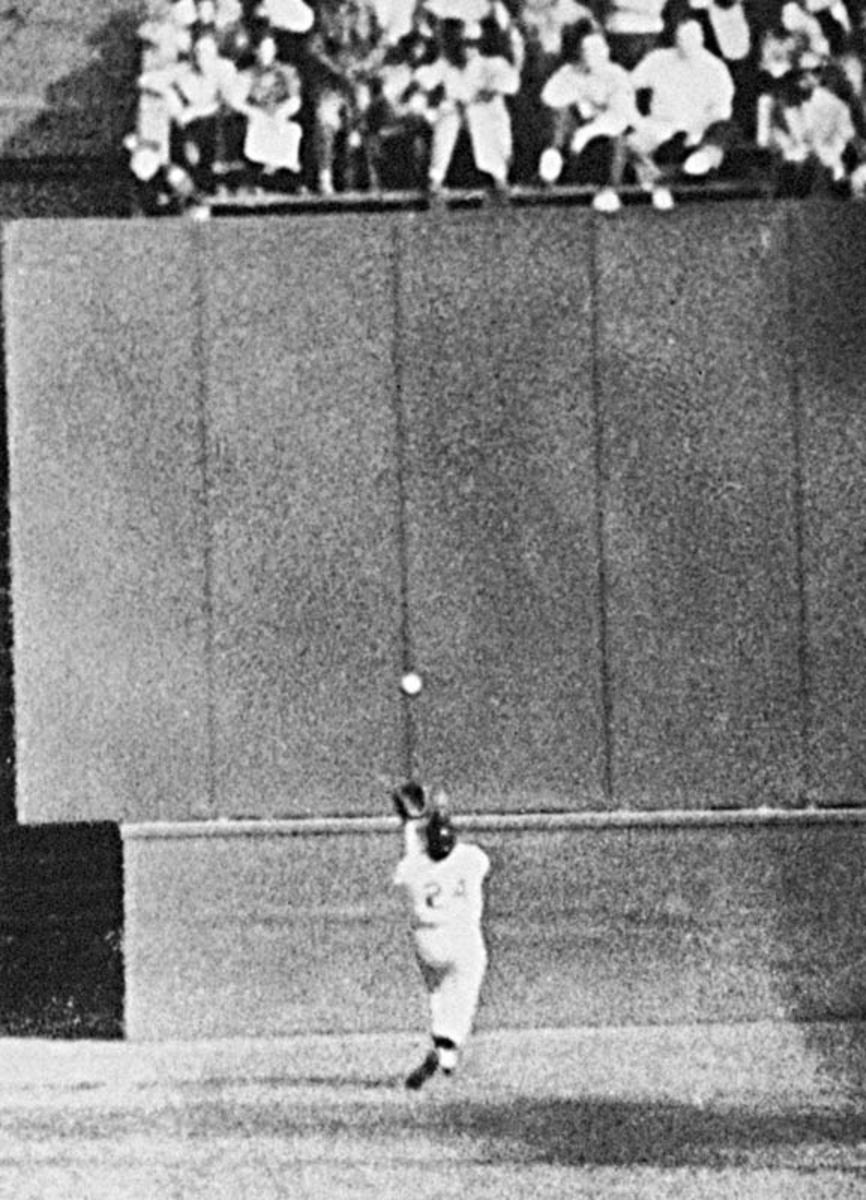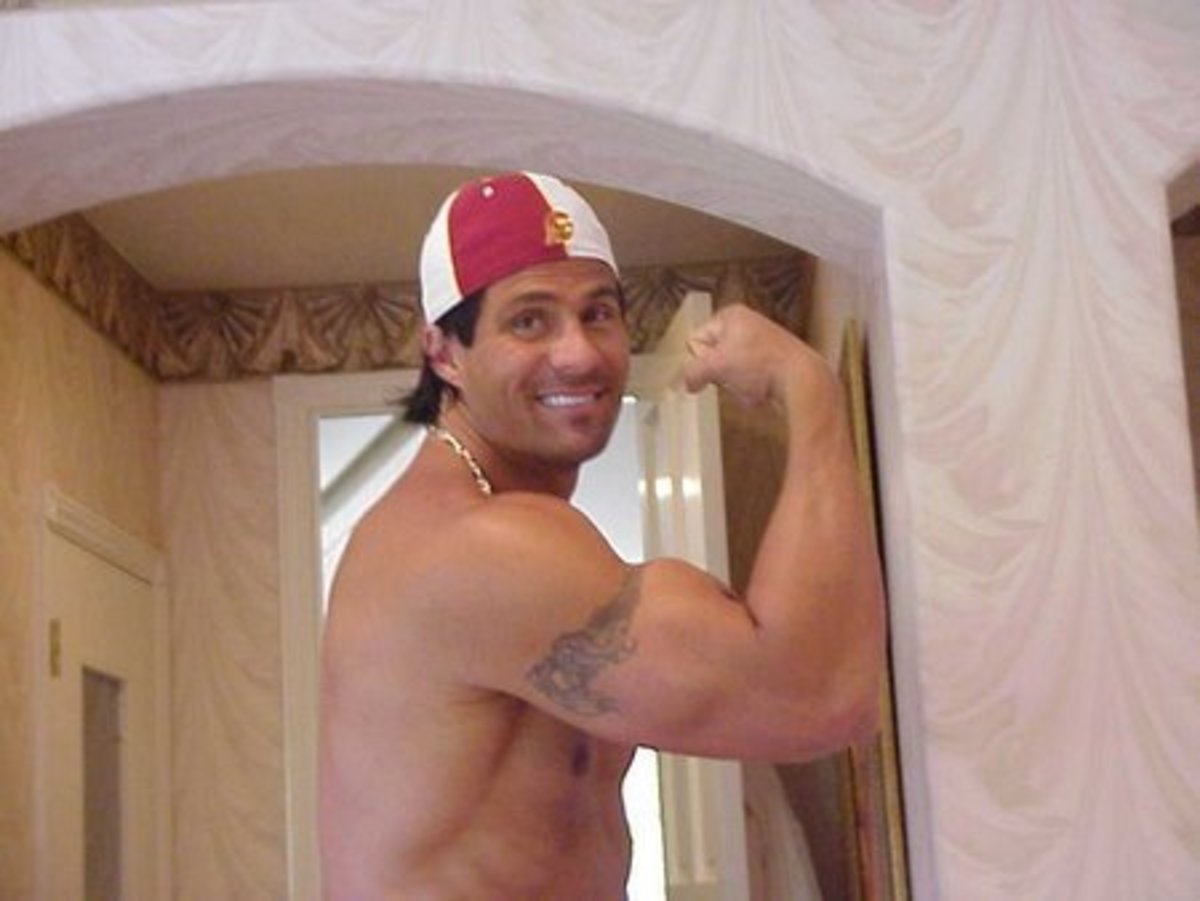- HubPages»
- Sports and Recreation»
- Team Sports»
- Baseball
Don Denkinger and the Blown Call That (Possibly) Turned a World Series
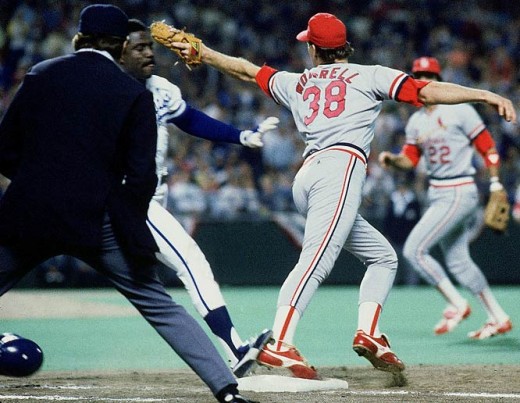
The 1985 World Series between the St. Louis Cardinals and the Kansas City Royals is a source of lore across the state of Missouri to this day. The series was notable for being the first postseason meeting between the two franchises, as well as the last postseason appearance for the Royals. It was a back-and-forth series that went the full 7 games and ended with a Royals victory. However, it is the outcome of Game 6, in which a badly-blown call by first base umpire Don Denkinger in the bottom of the ninth inning played a role in preventing the Cardinals from putting away the Royals and winning the series, which has generated the most amount of controversy over the years. Denkinger’s ruling at such a crucial spot in a deciding game of the series has caused no end of speculation to how things would have gone if his call would have went the other way.
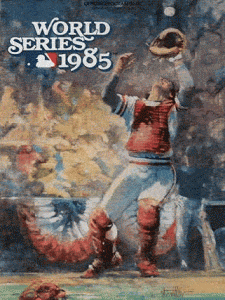
Background
Behind the bat of third baseman George Brett and the arm of starting pitcher Bret Saberhagen, the Kansas City Royals has a stellar season in 1985, coming back from a 3-1 deficit to win the American League Championship Series over the Toronto Blue Jays, and entering the World Series in search of the first world championship for an American League expansion team. The Cardinals blew by all competition in the NL East, rallying behind Rookie of the Year Vince Coleman and Golden Glove winner Ozzie Smith to defeat the Los Angeles Dodgers in 6 games in the National League Championship Series. The 1985 World Series was dubbed the “Show-Me Series”, after Missouri’s state nickname, and was notable for being the last time that the designated hitter rule was not used at any time during the series.
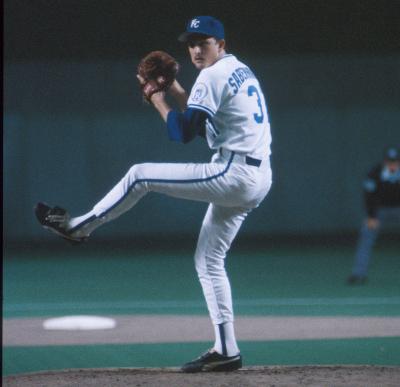
The Series Begins
The Royals, despite home field advantage giving them the chance to make a significant mark early on in the series, dropped the first two games to the Cardinals, managing just 3 total runs of offense against the redbirds’ starters John Tudor and Danny Cox. At the time, no team had ever rallied back from losing their first two games at home to win a World Series, and it seemed like a foregone conclusion that the Cardinals would be raising their tenth World Series banner.
Game 3, however, saw the Royals hand the ball to Cy Young winner and World Series MVP Bret Saberhagen. Saberhagen allowed only 1 run off of 6 hits in a complete game win that gave the Royals new life. The Cardinals would come close to slamming the door on the Royals the very next night, however, as John Tudor one-upped Saberhagen by throwing a complete game shutout. The Royals were now down 3 games to 1 for the second time in the postseason.
Game 5 was do-or-die for the Royals, and they responded by jumping out to an early 4-1 lead and knocking out Cardinals starting pitcher Bob Forsch in the second inning. It would be all that they needed, as Royals starter Danny Jackson delivered a complete game while allowing only five hits. The Royals had once again avoided elimination.
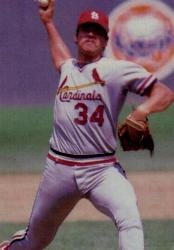
Game 6
Game 6 saw the series move back to Kansas City, and the two starting pitchers of Game 2 come back for a rematch, as Danny Cox and Charlie Leibrandt took the mounds for their respective teams. The matchup did not disappoint, as the two pitchers traded scoreless frames for the first seven innings of the game. In the top of the eighth inning, however, the stalemate was finally broken. After getting Cardinals left fielder Tito Landrum to fly out to center, Leibrandt gave up a single to third basemen Terry Pendleton. Cesar Cedeno then drew a one-out walk to put runners on first and second base. With the pressure on, Leibrandt struck out catcher Darrell Porter for the second out. Brian Harper came out to pinch-hit for Danny Cox with two outs and a force play at any base.
After drawing a 1-0 count, Leibrandt caught Brian Harper with two straight strikes to put the Royals within a single pitch of getting out of the jam. Harper, however, ripped a line drive single to Willie Wilson in center field. Pendleton, moving on contact, was able to race around third base and score to give the Cardinals the lead. With two on and two out, Ozzie Smith walked on a full count to load the bases, and Leibrandt was pulled from the game. The Royals stopped the Cardinals’ rally at one run and blanked them again in the top of the ninth inning, but found themselves down to their last three outs and the bottom half of their order coming up to the plate in the bottom of the ninth.
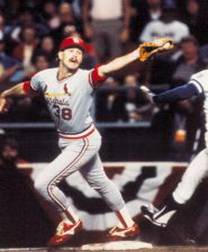
The Call
The Royals sent pinch hitter Jorge Orta up to bat for Pat Sheridan in the beginning of the ninth inning against star Cardinals closer Todd Worrell. Worrell’s first two pitches were over for strikes, and Orta quickly fell behind in the count. Worrell’s third offering was grounded slowly up the right side of the infield in routine fashion. First baseman Jack Clark fielded the ball as Worrell positioned himself with his foot on the first base bag to make the out. Clark flipped the throw to Worrell, who caught the ball a full step and a half before Orta touched the bag. First base umpire Don Denkinger, however, ruled that Orta was safe, stunning the players on the field, the Cardinals on the bench, and the broadcasters calling the game.
Cardinals manager Whitey Herzog stormed out of the dugout and laid into Denkinger with a series of visible obscenities as replay after replay on television and in the stadium showed that Orta was out at first. Todd Worrell re-enacted the play on multiple occasions to try to demonstrate Denkinger’s error to him. However, with no instant replay rule in baseball, the Cardinals’ protests were to no avail, as Denkinger refused to budge.
As the game resumed, Jack Clark, who was now playing to hold Orta on first base, could not field a routine fly ball from the next batter, Steve Balboni. On the next pitch, Balboni singled to put runners on first and second base with nobody out. The Royals then sent in Onix Concepcion as a pinch runner for Balboni. Catcher Jim Sundberg was up next, and attempted to lay down a sacrifice bunt to move the runners over, but Worrell made a masterful play and threw the ball to third base to force Orta out at third.
Hal McRae was sent up to pinch hit in the pitcher's spot, and the Cardinals allowed a disaster to occur. A 1-0 slider in the dirt was misplayed by Cardinals catcher Darrell Porter and kicked back to the backstop, allowing the runners to move up to second and third with only one out. The Cardinals decided to then walk McRae to set up a potential double play. Worrell bore down against pinch hitter Dane Iorg, who drilled Worrell’s second pitch into the gap in right field. Onix Concepcion scored. Jim Sundberg scored. The Royals had come back in the bottom of the ninth to save themselves from elimination.
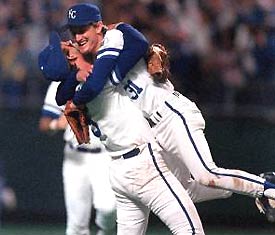
The Aftermath
As Denkinger returned to the locker room with the rest of the umpires, he reportedly asked for confirmation that he missed the call. When he was informed that he had indeed blown it, he recounted that he felt sick to his stomach. However, there was still one more game to play, and Denkinger was slated to start the game behind home plate.
Game 7 saw the return of ace Bret Saberhagen to the mound for the Royals. Saberhagen was pitching on a full five days’ rest, and the Cardinals, reeling from the previous night’s heartbreaker, just couldn’t do a thing against him. Saberhagen pitched a complete game, five-hit shutout and the Cardinals gave up an embarrassing 11 runs to hand the Royals their first and (as of this writing) only World Series title.
Alternate scenarios for the bottom of the ninth inning of Game 6 have been speculated on by baseball historians, Royals fans, and Cardinals fans alike. Had the correct call have been made and the bases left empty with one out, had Jack Clark then been in position to play Steve Balboni’s routine pop foul to give the Cardinals a second out, had any of the events turned out differently, it would have been the Cardinals winning the championship instead of the Royals. Such are the breaks that baseball is made of.
Baseball is a game of scenarios. Managers can approach different offensive and defensive situations in any number of varying fashions depending on the number of outs in the inning, the pitch count, the runners on base, and the pitcher-batter matchup. It’s one thing to say that a safe/out call cost a team the game if there were two outs in the bottom of the ninth, the play was at the plate, and the blown call caused a tying run to be scored. However, that was not the scenario in play. The Cardinals had many chances to end the game after the call was made. However, they allowed a single, a passed ball, an intentional walk, and finally, a walk-off hit to end the game, any of which could have gone another way. After that, they still had a full Game 7 in which they could have claimed the title.
As such, Denkinger’s call, while most certainly the wrong one, and while certainly having an impact on the inning, was not the sole determining factor that caused the Cardinals to lose the 1985 World Series. It deserves no more of the blame for the Cardinals’ loss than Bill Buckner’s infamous error would for the Red Sox’ loss the next year. Umpiring is a subjective profession requiring split-second judgment calls. Sometimes, those calls are mistakes. It is the hallmark of the best teams in baseball’s history to be able to play well enough to account for the breaks that don’t go their way.


